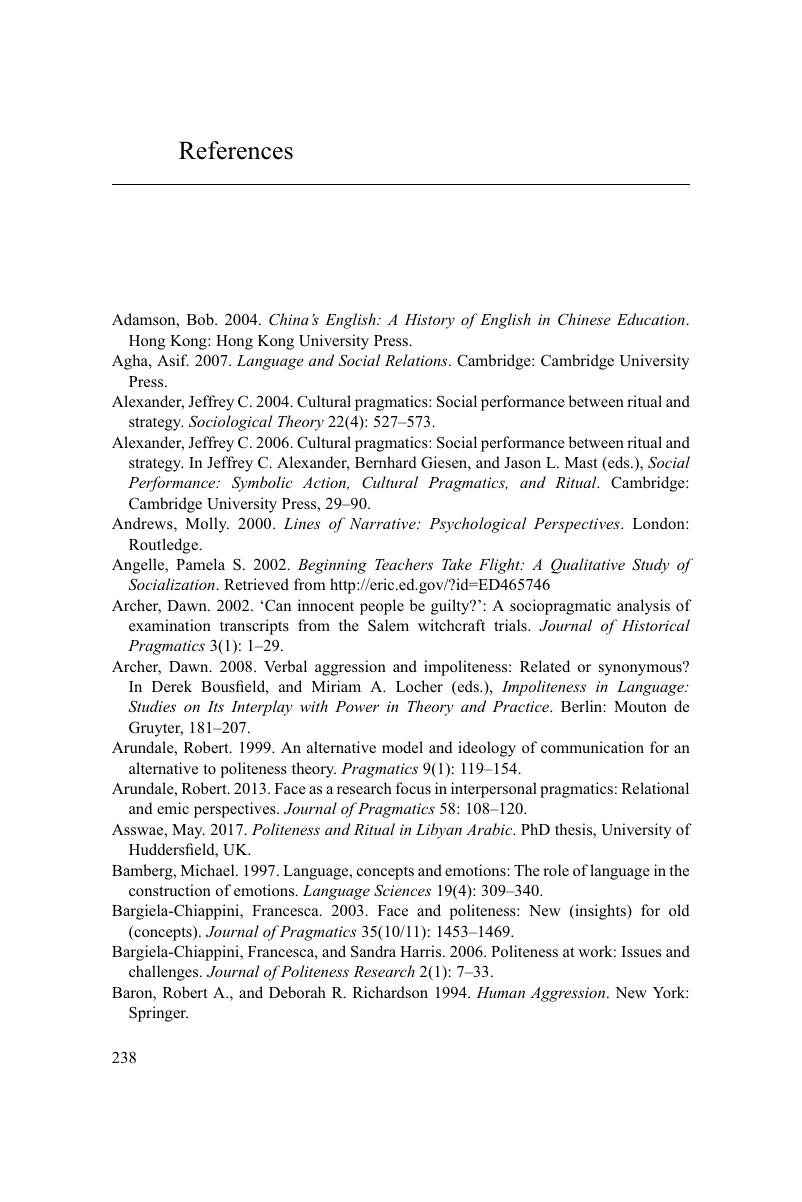References
Published online by Cambridge University Press: 13 April 2017
Summary

- Type
- Chapter
- Information
- Politeness, Impoliteness and RitualMaintaining the Moral Order in Interpersonal Interaction, pp. 238 - 256Publisher: Cambridge University PressPrint publication year: 2017

